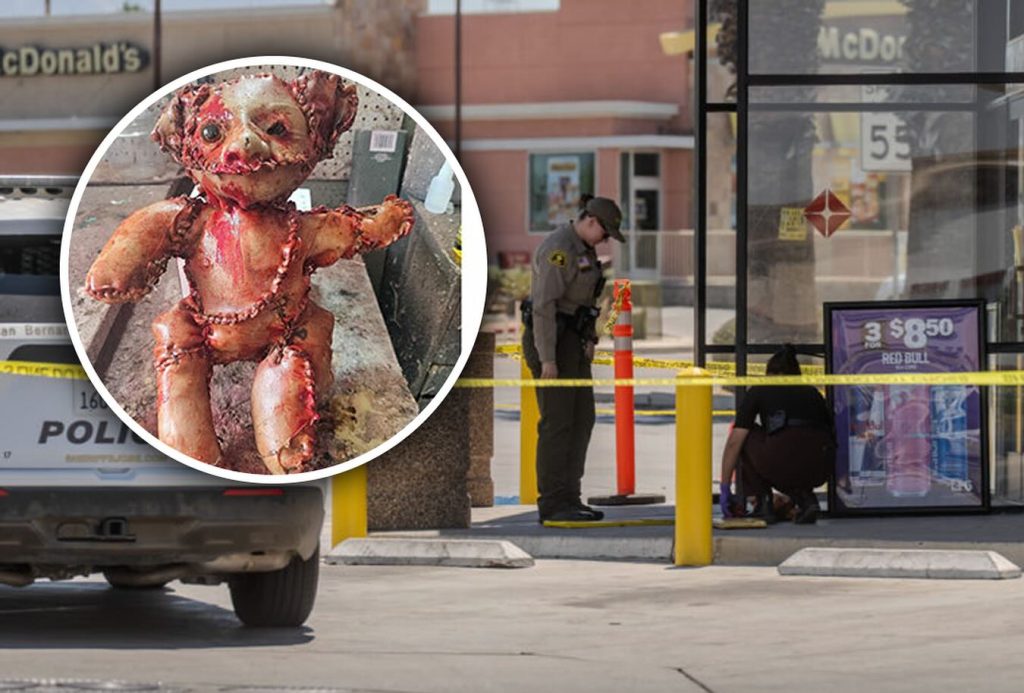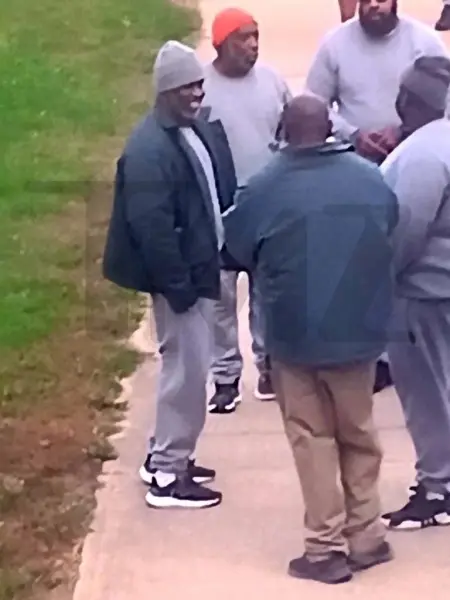A Teddy Bear That Looked Like It Was Made of Human Flesh Was Found at a California Gas Station—Authorities Investigated, But It Turned Out to Be Something Else Entirely
No one who happened upon that bear outside the AMPM gas station in Victorville, California on July 13, 2025, could have prepared for what they thought they were seeing. It appeared to be a teddy bear covered in human skin—stitched, leathery, with almost realistic facial features. Within hours, police cordoned off the parking lot, and a coroner investigator showed up. The scene looked like something out of a horror movie. But in real life, it turned into a lesson about art, panic, and a community’s swift response to what seemed at first like a macabre crime scene.
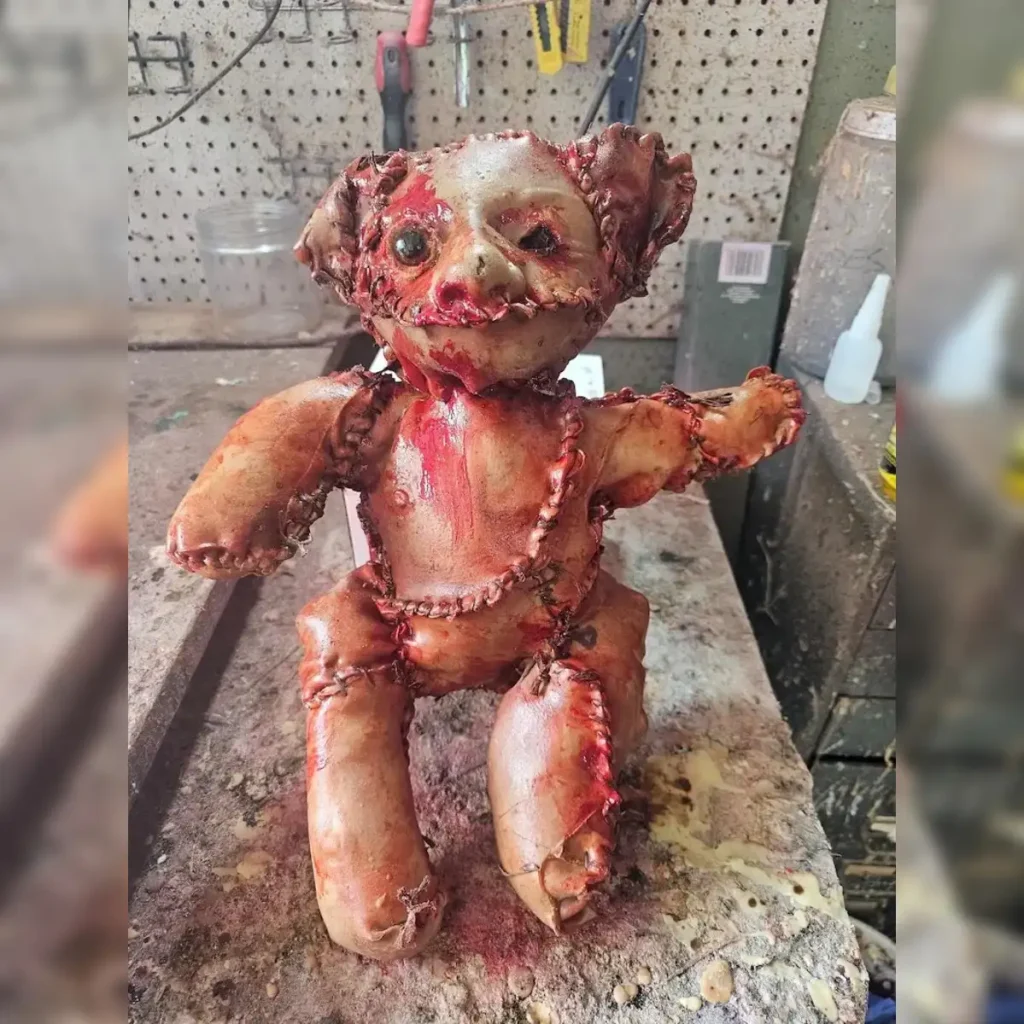
The first calls to 911 described what looked like human remains. Deputies arrived and found the bear sitting just outside the entrance, motionless and uncanny. Onlookers reported feeling sick to their stomachs. The California sheriff’s team treated it like a hazmat situation at first. The coroner collected the object for analysis, and residents were warned to stay away. Photographs showed a bear wrapped in material that resembled human skin—scaly, stitched, deeply unsettling. Authorities contacted medical examiners and forensic experts to rule out any chance of real human tissue. It was eerie, disorienting, and deeply unnerving.
Hours later, the truth emerged—and it was almost as shocking for different reasons. The bear was not made of human flesh. It was a latex horror prop, shipped to a Victorville customer by a South Carolina-based artist named Robert Kelly. He owns Dark Seed Creations, a renowned Etsy shop specializing in gore-themed props and effects. Kelly confirmed he had no idea about the prank. He had shipped the bear to a buyer the week before, never expecting it to be abandoned outside a convenience store or inspire a police response.
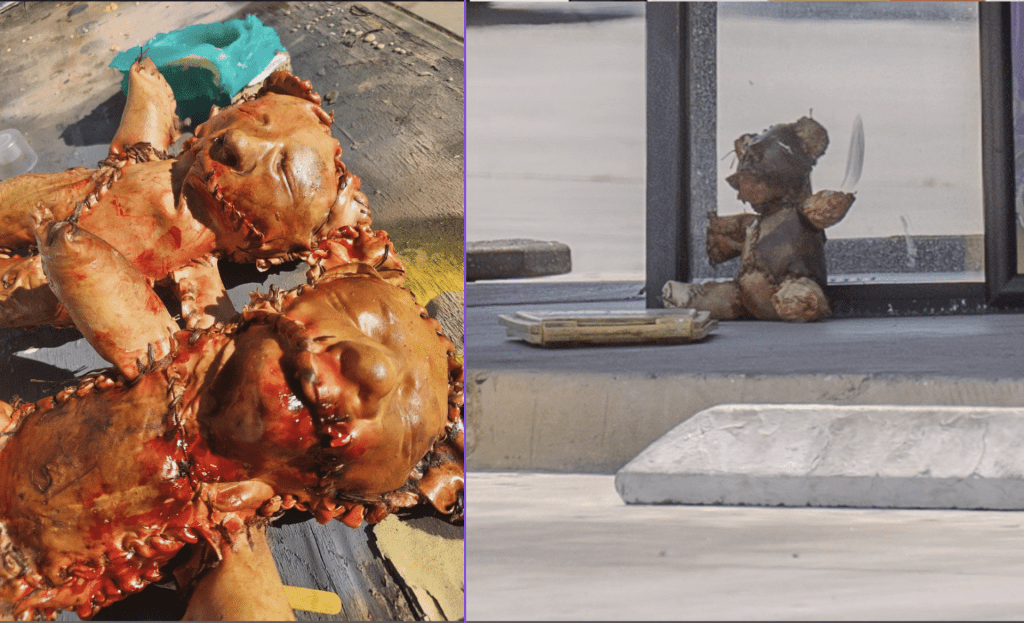
Kelly’s work is uniquely recognizable: life-casts made from latex, styled to mimic human skin down to the stitches. The bear in question sells for about $165 on his site and has been praised in horror communities for its gruesome realism. After media attention blew up, he posted on social media that someone “played a joke with one of my bears lol.” Though he doesn’t condone pranks, he admitted the exposure was good for business.
Law enforcement wasn’t amused. The sheriff’s department later confirmed they had arrested a 23‑year‑old Victorville man, Hector Corona Villanueva, on suspicion of knowingly filing a false emergency and planting a prop to mimick a crime scene. He faces charges for misuse of emergency resources and intentionally deceiving authorities. Deputies said such hoaxes tie up valuable resources and can endanger real emergencies.
The incident highlights how art can deceive—and scare. One moment, you’re faced with the unspeakable idea of human remains; the next, you discover it’s a crafted horror prop. For Victorville residents and passersby, the relief came swiftly once authorities confirmed the bear was fake. Still, the emotional impact lingered: shock, fear, and a deep feeling of being manipulated by something that seemed so disturbingly real.
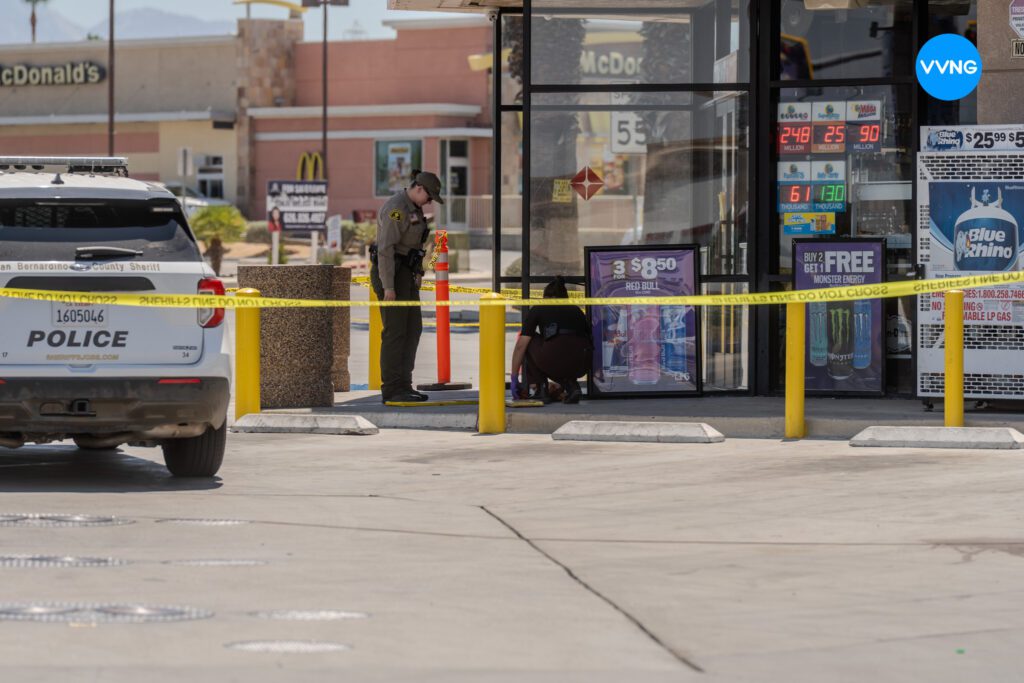
There’s a broader lesson here about the power of imagery. A lifelike object in a public space can trigger fear faster than facts can correct it. The bear sparked an immediate response because it tapped into a primitive fear of death and mutilation. Even after dispatchers and police gathered evidence, many social media threads continued circulating the original horror narrative without later corrections—showing how quickly misinformation can spread.
For Kelly, the fallout was mixed. His artistry was praised within genre circles, but he also drew criticism from those who felt he should anticipate how his creations might be misused. He maintains he is not responsible for customer behavior beyond the point of sale. Authorities did not announce charges against him—only the person who left the bear in public.
If there’s a silver lining, it’s that no one was hurt and real human remains were not involved. But there’s also a warning: in an age of shock content and viral scares, we’re all vulnerable to being duped—for a joke, a prank, or a marketing stunt. It’s a reminder that authenticity matters as much as impact.
The bear has since been removed and the scene cleared. Victorville returned to normal—quiet gas pumps, empty sidewalks, daily routines. Yet the bear’s brief appearance will linger in memory. A fake prop caused real distress, a community was alarmed, and law enforcement scrambled. All from an object that sells online for the price of a dinner.
In the end, it’s a story of perception over substance, and fear made real by visual conviction. It also underscores a truth about emergency systems: they rely on credibility and trust. When false alarms happen, it doesn’t just inconvenience police—it risks delaying help for someone else in danger.
So if you ever see something that looks human—and disturbing—take a step back. Maybe it’s a prank. Maybe it’s effect. But don’t assume the worst is real until confirmed. And if you’re someone creating realistic horror art, remember: sometimes the real horror isn’t your work—it’s what people choose to do with it.
